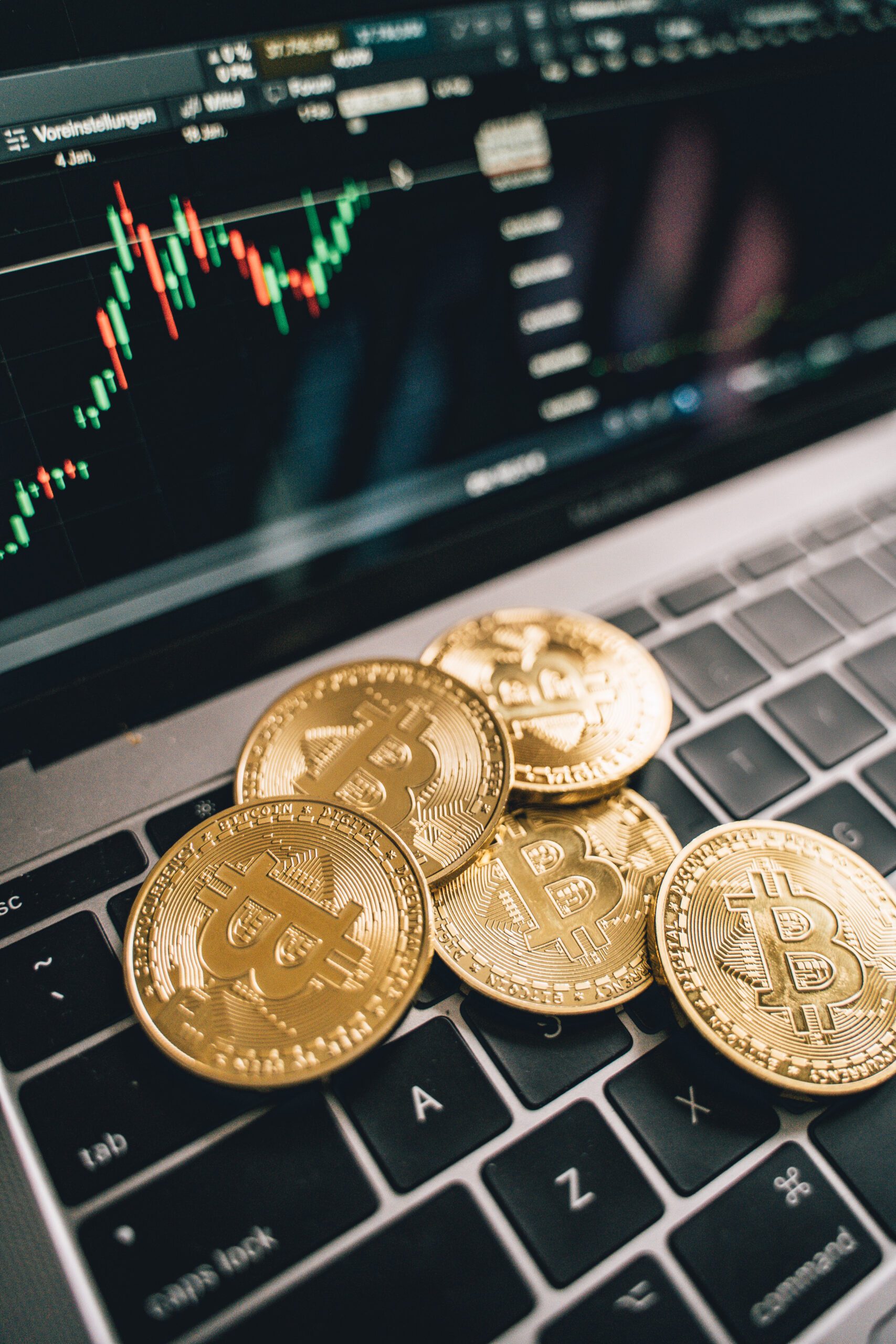Are you looking to maximize your profits by day trading cryptocurrencies? If so, you’ll want to know the best crypto to focus on for optimal returns. In this article, we’ll reveal the top cryptocurrency that has shown consistent growth and volatility, making it an ideal choice for day traders. Get ready to dive into the exciting world of crypto day trading and discover the digital asset that could potentially keep your profits soaring.
1. Liquidity and Volume
1.1 High Liquidity
When it comes to day trading cryptocurrencies, one of the key factors you should consider is liquidity. Liquidity refers to the ease with which an asset can be bought or sold without significantly impacting its price. High liquidity ensures that there are enough buyers and sellers in the market, making it easier for you to enter or exit your positions quickly. This is especially important for day traders who aim to capitalize on short-term price movements. Therefore, it is advisable to focus on cryptocurrencies with high liquidity when choosing which ones to trade.
1.2 Consistent Volume
In addition to liquidity, it is crucial to consider the trading volume of a cryptocurrency. Volume refers to the number of shares or contracts traded in a particular asset within a given time period. Consistent volume signifies active trading activity and indicates that there is sufficient interest in the cryptocurrency. This is important because higher trading volumes often result in tighter bid-ask spreads, reduced slippage, and increased price efficiency. As a day trader, you want to trade cryptocurrencies that have consistent and healthy trading volumes to ensure smooth execution of your trades.
2. Volatility
2.1 Significant Price Fluctuations
Volatility is a characteristic of cryptocurrencies that day traders actively seek. Volatility refers to the magnitude of price fluctuations within a given period. The higher the volatility, the greater the potential for profit or loss. Day traders take advantage of short-term price movements, so trading cryptocurrencies with significant price fluctuations can present lucrative opportunities. However, it is important to note that high volatility also brings higher risk, so it is crucial to have a sound risk management strategy in place when day trading volatile cryptocurrencies.
2.2 Volatility Index
To gauge the overall volatility of the cryptocurrency market, many traders rely on the volatility index. The volatility index tracks and measures the expected volatility in the market over a specified period. It can be helpful in identifying periods of high or low volatility. As a day trader, being aware of the current volatility levels can help you adjust your trading strategies accordingly. Some popular volatility indexes for cryptocurrencies include the Bitcoin Volatility Index (BVOL) and the Ethereum Volatility Index (EVOL), among others.

3. Popular Cryptocurrencies
3.1 Bitcoin (BTC)
Bitcoin (BTC) is the most well-known and widely traded cryptocurrency. It has high liquidity and trading volume, making it an ideal choice for day traders. Bitcoin’s volatile nature provides ample opportunities for traders to profit from short-term price movements. Additionally, Bitcoin’s popularity and market dominance make it highly influential in shaping the overall cryptocurrency market.
3.2 Ethereum (ETH)
Ethereum (ETH) is another popular cryptocurrency among day traders. It is known for its smart contract functionality, which has contributed to its widespread adoption and market demand. As a day trader, Ethereum’s liquidity and trading volume make it an attractive choice. Additionally, the development of decentralized applications (DApps) on the Ethereum blockchain often leads to increased market activity, providing potential trading opportunities.
3.3 Ripple (XRP)
Ripple (XRP) is a cryptocurrency designed for fast and low-cost international money transfers. While it may not have the same level of decentralization as some other cryptocurrencies, it still maintains a significant presence in the market. Ripple’s trading volume is consistently high, making it suitable for day trading. Additionally, due to its partnerships with various financial institutions, news events related to Ripple can have a significant impact on its price, providing potential opportunities for day traders.
3.4 Litecoin (LTC)
Litecoin (LTC) is often referred to as the “silver to Bitcoin’s gold.” It was one of the first altcoins to be created and is known to have fast transaction confirmation times compared to Bitcoin. Litecoin’s liquidity and trading volume make it an attractive option for day traders. Additionally, Litecoin has a strong community and active development, which can contribute to price volatility and potential trading opportunities.
3.5 Binance Coin (BNB)
Binance Coin (BNB) is the native cryptocurrency of the Binance exchange, one of the largest and most popular cryptocurrency exchanges in the world. BNB has gained significant traction due to its utility within the Binance ecosystem, offering benefits such as reduced trading fees and participation in token sales. BNB’s liquidity and trading volume make it an appealing choice for day traders. Additionally, BNB’s price can be influenced by factors such as the success of the Binance exchange and the release of new features or partnerships.
4. Altcoins
4.1 Cardano (ADA)
Cardano (ADA) is a blockchain platform that aims to provide a secure and scalable infrastructure for the development of decentralized applications and smart contracts. ADA has gained attention in the cryptocurrency market due to its innovative approach and academic peer-reviewed research. Cardano’s liquidity and trading volume make it a viable option for day traders seeking exposure to altcoins.
4.2 Polkadot (DOT)
Polkadot (DOT) is a multi-chain platform that enables different blockchains to interoperate and share information. It aims to provide scalability, security, and innovation in the blockchain space. DOT’s liquidity and trading volume make it an attractive choice for day traders interested in participating in the growth of interoperable blockchains.
4.3 Chainlink (LINK)
Chainlink (LINK) is a decentralized oracle network that connects smart contracts with real-world data. The network provides reliable and tamper-proof data inputs to smart contracts, enabling the creation of decentralized applications with external data integration. Chainlink’s liquidity and trading volume make it a desirable option for day traders looking for exposure to the decentralized oracle market.
4.4 Stellar (XLM)
Stellar (XLM) is a blockchain platform designed for fast and low-cost cross-border transactions. It aims to facilitate the seamless exchange of value between different currencies and financial systems. Stellar’s liquidity and trading volume make it an appealing choice for day traders seeking exposure to the world of digital payments and remittances.
4.5 Dogecoin (DOGE)
Dogecoin (DOGE) started as a meme cryptocurrency but has gained significant popularity due to its active community and donation initiatives. While Dogecoin may not have the same level of market adoption as some other cryptocurrencies, its liquidity and trading volume make it an interesting choice for day traders looking to capitalize on price volatility and community-driven events.

5. Exchange Fees
5.1 Low Fees
When selecting a cryptocurrency exchange for day trading, it is essential to consider the fees charged by the exchange. Low trading fees can significantly impact your profitability, especially if you engage in frequent trading. Look for exchanges that offer competitive trading fees to ensure that a significant portion of your profits is not eaten up by fees.
5.2 Fee Structures
In addition to low fees, it is important to understand the fee structure of the exchange you choose. Different exchanges may have varying fee structures, such as maker-taker fees or flat fees per trade. Maker fees are charged when you add liquidity to the market, while taker fees are charged when you remove liquidity. Take the time to analyze the fee structure and consider how it aligns with your trading strategy and frequency.
6. Analysis Tools
6.1 Real-Time Market Data
To make informed trading decisions, it is crucial to have access to real-time market data. Look for exchanges or trading platforms that provide reliable and up-to-date data on cryptocurrency prices, trading volumes, and order book depth. Real-time market data allows you to analyze trends, identify potential entry or exit points, and stay updated on the overall market sentiment.
6.2 Technical Analysis Indicators
Technical analysis plays a significant role in day trading. Having access to a wide range of technical analysis indicators can help you identify patterns, trends, and potential price reversals. Look for trading platforms or charting tools that offer a comprehensive selection of indicators, such as moving averages, oscillators, and volume-based indicators. These tools can assist you in making well-informed trading decisions.
6.3 Candlestick Charts
Candlestick charts are widely used in technical analysis and provide valuable information about price movements and market sentiment. They display the opening, closing, high, and low prices of a cryptocurrency within a specific time period. Candlestick patterns can help day traders identify potential trend reversals, bullish or bearish signals, and key support or resistance levels. Familiarize yourself with candlestick chart patterns and learn to interpret them effectively to enhance your trading strategies.

7. Security
7.1 Trustworthy Exchanges
When engaging in day trading, it is crucial to choose a trustworthy and secure cryptocurrency exchange. Look for exchanges that have a solid reputation, stringent security measures, and a history of successfully handling customer funds. Conduct thorough research, read user reviews, and consider factors such as two-factor authentication, cold storage of funds, and insurance coverage.
7.2 Two-Factor Authentication
Two-factor authentication (2FA) adds an additional layer of security to your cryptocurrency exchange account. By enabling 2FA, you will be required to provide a second form of verification, such as a unique code from a mobile app, in addition to your login credentials. This significantly reduces the risk of unauthorized access to your account and protects your funds from potential security breaches.
7.3 Cold Wallet Storage
Consider storing a significant portion of your cryptocurrency holdings in cold wallets. Cold wallets are offline storage devices specifically designed to securely hold cryptocurrencies. By keeping your funds offline, you minimize the risk of unauthorized access or hacking attempts. While day traders may need to keep a portion of their funds on an exchange for active trading, ensuring the majority of your holdings are stored in cold wallets adds an extra layer of security.
8. Community and News
8.1 Active and Supportive Community
Being part of an active and supportive cryptocurrency community can provide valuable insights, trading tips, and updates on market trends. Engage with fellow traders, join online forums or social media groups, and participate in discussions. Sharing knowledge and experiences with a community of like-minded individuals can help you improve your trading skills and stay informed about the latest developments in the cryptocurrency industry.
8.2 Stay Updated with News
Staying updated with the latest news and events related to cryptocurrencies is essential for day traders. News can significantly impact the price and volatility of cryptocurrencies. Monitor reputable news sources, blogs, and cryptocurrency websites to stay informed about regulatory changes, major partnerships, technological advancements, or any other factors that may influence the market. Having access to timely news can give you an edge when making trading decisions.
8.3 Social Media Channels
Many cryptocurrency projects and influencers maintain active social media accounts where they share updates, insights, and market analysis. Follow key figures in the cryptocurrency industry on platforms such as Twitter, Telegram, or YouTube. Engaging with reputable individuals or projects can provide valuable information and help you stay connected to the cryptocurrency community.
9. Risk Management
9.1 Setting Stop-Loss Orders
Risk management is a crucial aspect of day trading. Setting stop-loss orders is an effective way to limit potential losses. A stop-loss order is a predetermined price at which you are willing to close your position to minimize further losses. By setting a stop-loss order, you ensure that your loss is capped at a specific percentage, protecting your capital and preventing significant drawdowns.
9.2 Implementing Take-Profit Orders
In addition to stop-loss orders, implementing take-profit orders allows you to secure potential profits. A take-profit order is a predetermined price at which you are willing to close your position to lock in profits. By setting take-profit orders, you remove the emotional aspect of decision-making and ensure that you exit a trade when your profit target is reached.
9.3 Diversifying Investments
Diversifying your cryptocurrency portfolio is an essential risk management strategy. Day traders should avoid putting all their eggs in one basket by spreading their investments across various cryptocurrencies. Diversification can help mitigate the risk associated with any single cryptocurrency’s price volatility. By investing in multiple cryptocurrencies, you reduce the impact of any individual asset’s performance on your overall portfolio.
10. Trading Strategies
10.1 Scalping
Scalping is a popular day trading strategy that involves making small, quick trades to capitalize on short-term price movements. Scalpers aim to profit from the bid-ask spread and rely on technical analysis indicators and real-time market data to identify favorable entry and exit points. This strategy requires a high level of discipline, risk management, and the ability to make quick decisions.
10.2 Swing Trading
Swing trading is a strategy that involves holding positions for a few days to a few weeks to capture medium-term price movements. Swing traders aim to ride the “swings” or fluctuations in price to maximize profits. This strategy relies on technical analysis, including chart patterns, trendlines, and indicators, to identify potential entry and exit points. Swing trading requires patience, as positions are typically held for longer periods compared to scalping.
10.3 Trend Following
Trend following is a strategy that involves identifying and trading in the direction of established market trends. Trend followers aim to profit from the continuation of a trend until there are clear signs of a reversal. This strategy relies heavily on technical analysis indicators, such as moving averages and trendlines, to confirm the existence of a trend. Trend following requires patience and the ability to ride out temporary fluctuations against the overall trend.
10.4 Breakout Trading
Breakout trading is a strategy that involves identifying key support and resistance levels and trading when the price breaks out of these levels. Breakout traders aim to capture significant price movements that often occur following a period of consolidation. This strategy requires the ability to accurately identify support and resistance levels and confirm the validity of a breakout through volume analysis and other technical indicators.
In conclusion, day trading cryptocurrencies requires thorough analysis, risk management, and the ability to adapt to a rapidly changing market. By considering factors such as liquidity, volume, volatility, and security, you can make informed decisions when choosing which cryptocurrencies to trade. Implementing effective trading strategies and staying connected with the cryptocurrency community and news sources will help you navigate the cryptocurrency market successfully. Remember to always conduct thorough research and practice proper risk management techniques to maximize your chances of success as a day trader.

